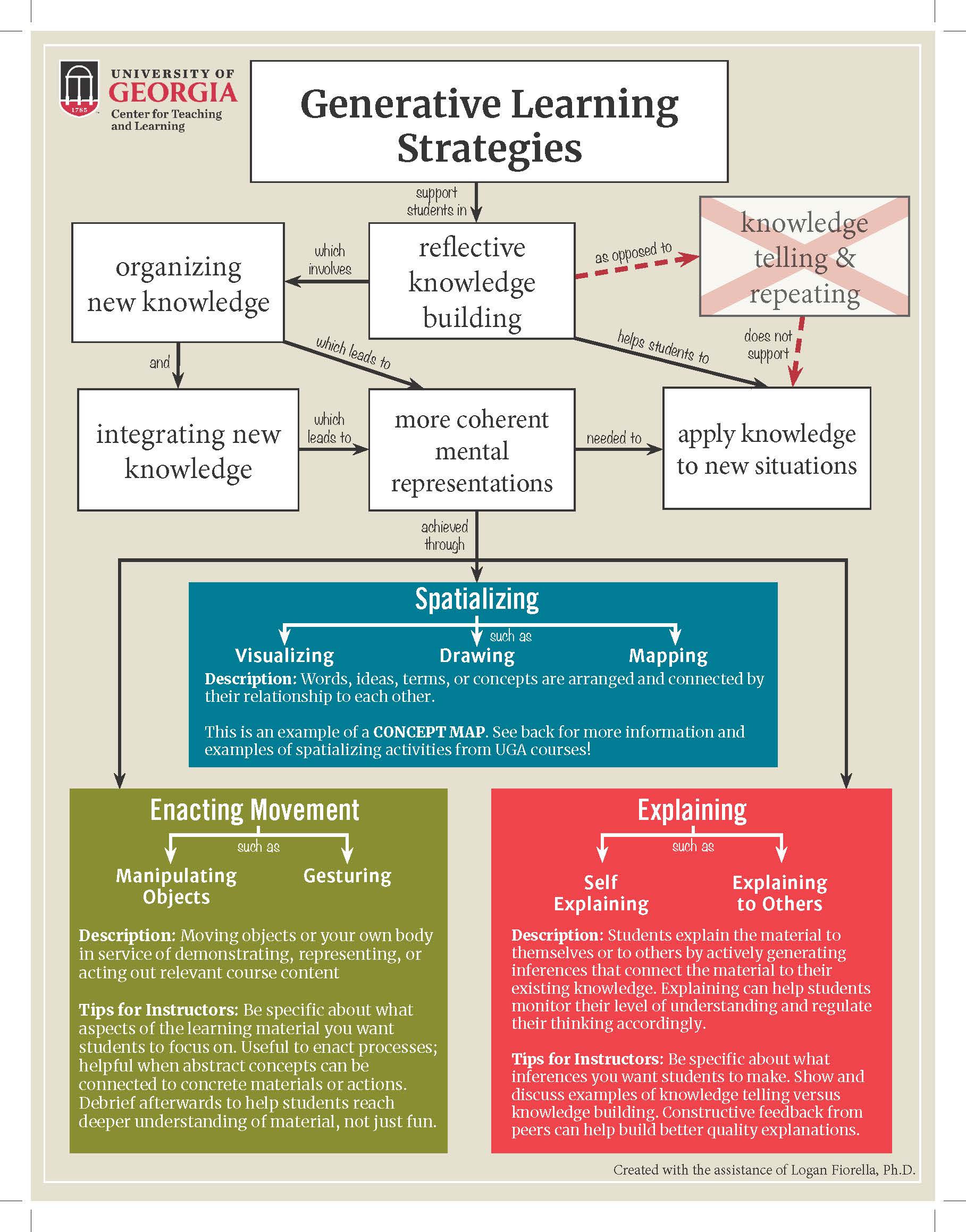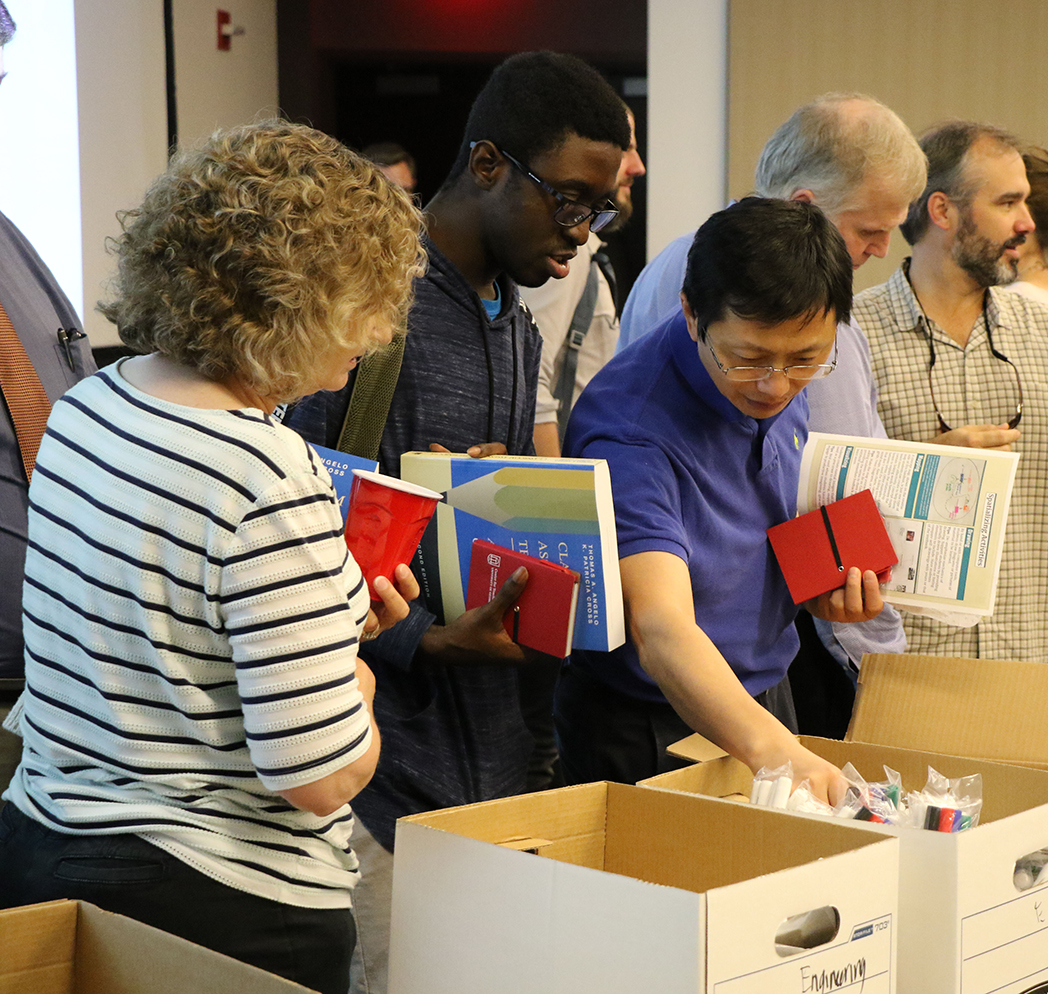Active Learning Snapshot
Purpose
To have substantial, thoughtful and productive conversations about teaching and learning at UGA, we first need to know what is happening in the different classrooms across the university. What are the range of teaching practices being used by faculty at UGA? Which active learning practices are faculty using in each College, and how does that relate to the types of spaces they teach in? How satisfied are faculty with student learning and engagement in their classes? How can the Office of Instruction and the Center for Teaching and Learning support faculty to attempt, refine, innovate with or sustain the use of active learning practices?
Why Active Learning?
We focus the pilot university-wide survey on active learning practices for a variety of reasons: First, the substantial research base on the efficacy of active learning practices—used alone or in addition to lecture—has systematically shown significant and positive effects on student learning (Baepler, Walker & Driessen, 2014; Freeman et al., 2014; Haak 1998; Prince, 2004). Second, the 2017 Presidential Task Force on Student Learning and Success was asked to look at UGA’s undergraduate learning environment to identify rigorous educational experiences for students, and the 2018 State of the University address by President Morehead identified supporting faculty to implement active learning strategies as one of the key initiatives to enhance the learning environment for UGA students.
Finally, we acknowledge that learning about active learning takes time and support. By taking this survey, you will help inform future faculty development opportunities related to active learning and teaching in general at UGA. While this survey is not a complete inventory of all active learning strategies or approaches, it will provide us with important information for a university-wide conversation about active learning and its effective implementation within the different units and colleges. We welcome your feedback within the survey and in follow-up conversations to continue to develop a survey that represents the breadth and depth of active learning practices with which UGA faculty engage their students.
Is it confidential? What will be done with the results?
Identifying information such as your name or email WILL NOT be collected. IP addresses will be deleted before data is aggregated and analyzed by the CTL. We ask for the name of your unit or college only so that we may aggregate the data by unit or college and record participation rates for use in awarding gifts.
CTL analyzed data from the 2018 Snapshot Survey and discovered that many faculty expressed an interest in learning about the following active learning strategies:
- Concept Mapping
- Muddiest Point
To generate an informative and useful resource on concept mapping for faculty, the CTL recruited the help of UGA cognitive scientist Dr. Logan Fiorella, an expert on learning strategies like concept mapping, and the Media Co-op, a collaboration between the media teams from the CTL and the Office of Online Learning. Dr. Fiorella assisted in conceptualizing the handout below on generative learning strategies (the broad category that includes concept maps as one example), and the Media Co-op assisted with design and production. You can download the handout here (PDF).

The front page of this handout features a concept map to visually display and connect the learning affordances of generative learning strategies, demonstrating how they support students to apply knowledge to new situations. Notice the linking terms between the boxed key features - these are a distinguishing featuring of concept maps. The back page of the handout focusing on spatializing activities with examples from UGA classrooms. Spatializing is a term used to describe what students are doing when they use concept maps.
Knowing about concept maps is not the same as knowing how best to use them for student learning. Therefore, the Media Co-op is working with the CTL to produce a short video about how concept maps are used in three different UGA faculty member’s classrooms. The video will feature interviews with the faculty and their students and footage of concept maps being used in class. Filming is happening in Spring 2019, and we hope to release this video to the UGA community in AY 2019-2020.
Resources on the Muddiest Point are available for download here (PDF) and here.
How was this survey developed?
This survey was developed through systematic development and refinement with feedback from UGA faculty. The available literature on research-based approaches to teaching at the post-secondary level was consulted, which included validated observational and self-report measures of faculty teaching practices. Because a majority of these validated measures were developed for use in STEM education, drafts of the survey were piloted with UGA faculty representing diverse disciplines and fields such as: Education, Environment and Design, Service Learning, Experiential learning, Anthropology, Psychology, Art, Engineering, Classics, Life Sciences, and Biological Sciences. As we look to refine the survey in subsequent semesters, we look forward to collecting your feedback both within the pilot survey itself and from follow up conversations by area.

